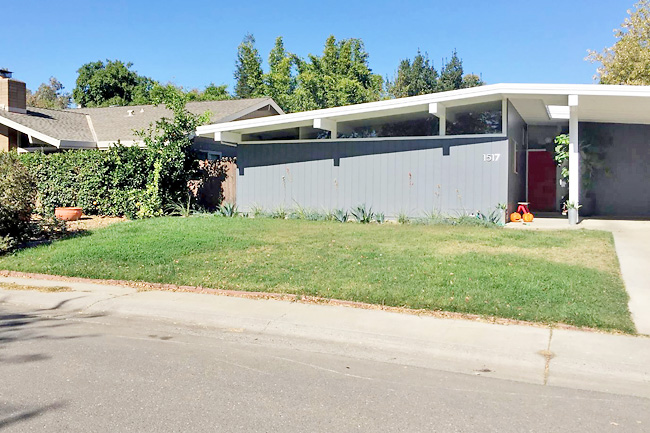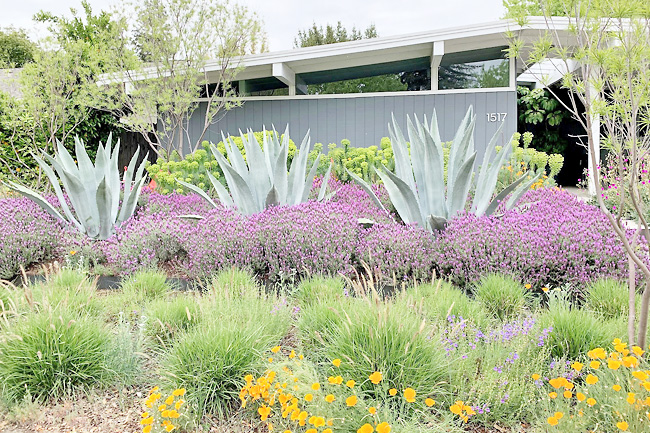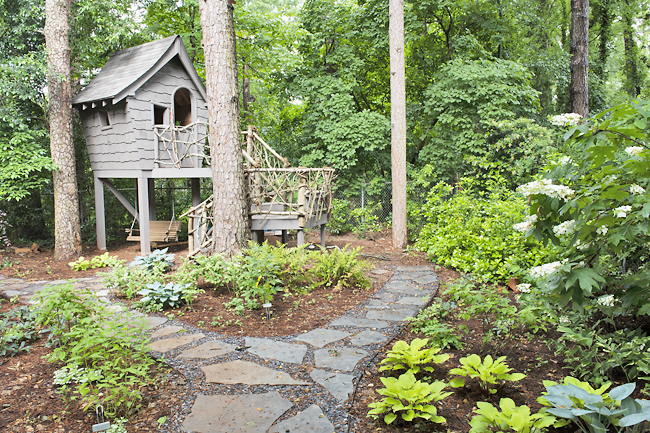Laura Daily
THE WASHINGTON POST – With numerous municipalities and states considering or enacting strict limits on residential grass, you may have considered ditching your home’s turf.
Xeriscaping – or designing a landscape that needs little irrigation to survive – is no longer a radical idea, even if you don’t live in an area where lawns are being restricted.
Traditional lawn grasses are thirsty. Because of shallow roots, they need anywhere from 20 to 60 percent more water than other plants in your yard to appear green and lush, said Haven Kiers, assistant professor of landscape architecture at the University of California at Davis.
The shallower the roots, the faster the grass dries out and the more water it needs, which is not ideal when parts of the country are coping with unprecedented drought.
At least 50 per cent of the water in the Western United States is used for landscape irrigation, said Lindsay Rogers, a water policy analyst with Western Resource Advocates.
“When you replace your lawn with drought-proof landscaping, you save about 40 per cent in outdoor water use,” she said.
“Not only is it important to water security, but you save significantly on your water bills.”
Converting your lawn doesn’t mean having five spindly plants poking through a rock pile, though, or a sea of cactus and gravel. Native plants generally require less water, because they have naturally evolved and adapted to the environment. “You can have a drought-tolerant garden – emphasis on the word ‘garden’ – that is both beautiful and sustainable,” Kiers said.
Here are some steps to transition your yard (or portions of it) to a drought-friendlier – but still inviting – space.



USE ONLINE RESOURCES
Guides for converting your turf to native plants can be found on the American Society of Landscape Architects’ website, asla.org, including “Sustainable Residential Design: Improving Water Management” and “Sustainable Residential Design: Applying Ecological Design.” Brandy Hall, a landscape designer and founder of Shades of Green Permaculture in Atlanta, offers a free online webinar called “Intro to Climate Action Landscaping.”
MAP YOUR SPACE
Sketch out your yard, including a rough estimate of its length and width. Use circles to mark existing trees and shrubs, and note any paths or permanent features. Also, determine whether the soil is clay or sand; when you wet it, clay will roll into a ball, and sand will break apart. Note which areas are sunny or shaded, and where it is wet, moist or dry.
Once you have a blueprint, you can make copies and pencil in different designs and plants.
Kiers said you should also take photos of your yard and bring them with to your local garden center or home improvement store to help salespeople visualise your space and offer suggestions.
“It is important to research how big plants get,” Colwell said. “If you learn a plant is going to grow to five feet, you want to put it in a space that allows for full growth, so you never have to prune it.”
DECIDE WHAT YOU WANT
Choose plants that can handle conditions in your location. “We get 55 inches of rain a year in Atlanta. Drought may not be an issue, but flooding is, and 80 to 90 percent of water that falls on a mown lawn runs off instead of infiltrating the soil,” Hall said. “Then we deal with hot, dry summers, so we still have to irrigate. I’m looking for plants that can take from 30 to 70 inches of rain per year and can handle hot and dry conditions.”
KILL AND REMOVE GRASS
There are several ways to do this. One is to turn off the water and solarise the lawn by covering it with black plastic. The trapped heat will fry the grass, and you can till it into the soil. This usually takes about two months. Another option is to cover the area with pieces of cardboard, then cover that with a few inches of mulch.
As the cardboard degrades, it will kill the grass, and you can replace it with new plants. Or you can dig out the grass, removing the top one to two inches of soil, including any roots. This technique is the most labour-intensive, but also the quickest.
COVER YOUR GROUND
There are alternatives to the traditional water-hogging lawn. One is “mow-free” (sometimes called no-mow) grass. This is typically a mixture of low-growing turfgrasses – most are a blend of fescues – that require little grooming, use less water and can be maintained as a turf lawn or left unmown for a meadow-like appearance.
You can also mulch heavily and establish living ground cover using plants such as white clover, creeping thyme, creeping germander or bugleweed, which fill niches and retain moisture, Kiers said.
EVALUATE THE IRRIGATION
In dry climates, a drought-resistant yard still needs water-efficient irrigation, Hall said.
This could mean installing a low-pressure drip system, which delivers water to the root zone; converting your existing sprinklers to drip; or retrofitting pop-up spray heads with water-efficient hardware, such as an MP Rotator, which disperses larger water droplets that fall to the ground instead of evaporating.
In wet climates, if you use native plants, you may not need irrigation once the plants are established.
CONSIDER HIRING A PRO
Those who are uncomfortable with do-it-yourself gardening or who have a bigger budget may want to consult a landscape architect. To save time and avoid miscommunication, be prepared before your meeting.
Take photos of plants and landscaping you like. (Make sure it’s a viable choice in your area.) Hiring a company to do a complete landscape overhaul can be pricey. Costs vary by square footage, density, existing plants and soil preparation.
For example, in Hall’s area, 1/4 acre starts at about USD30,000, including design, vegetation and labor, she said. Depending on the amount of sweat equity you want to invest, a DIY conversion for the same space would cost about USD10,000 to USD16,000, Kiers said.
BE PREPARED FOR MAINTENANCE
Xeriscaping doesn’t mean zero care. Even drought-tolerant plants require water, and pesky weeds must still be pulled.
Yes, you will spend less time mowing, but expect to cut back native grasses, perennials and shrubs every one to two years.
You don’t have to do it all at once. “Are there places such as a walkway where a border of native shrubs would work? If so, take out the grass there and replace it,” Kiers said. “Then next year, do another chunk of lawn. An instant garden is expensive, but landscapes get better – fluffier, grander and greener – over time.”





